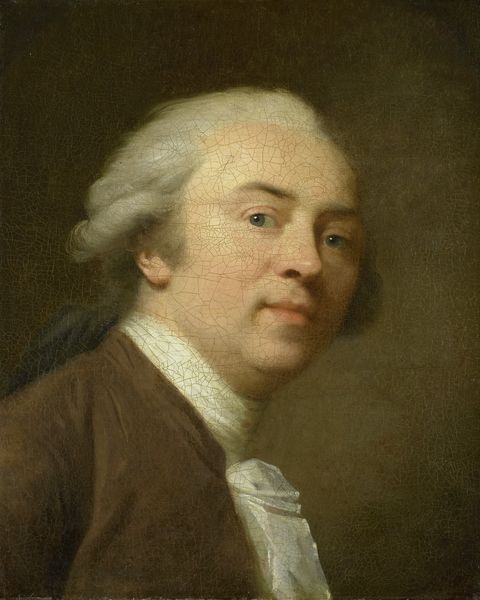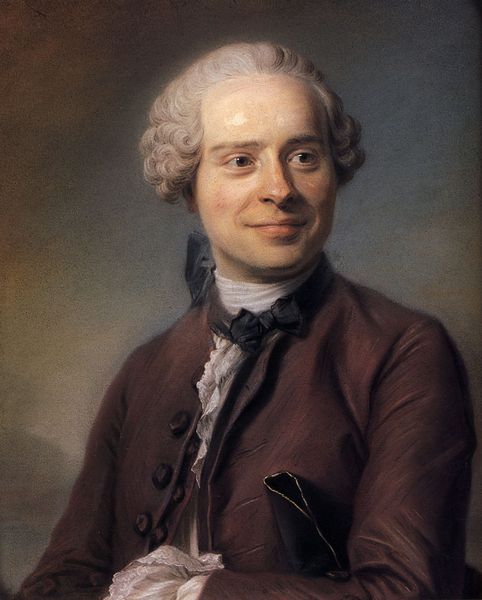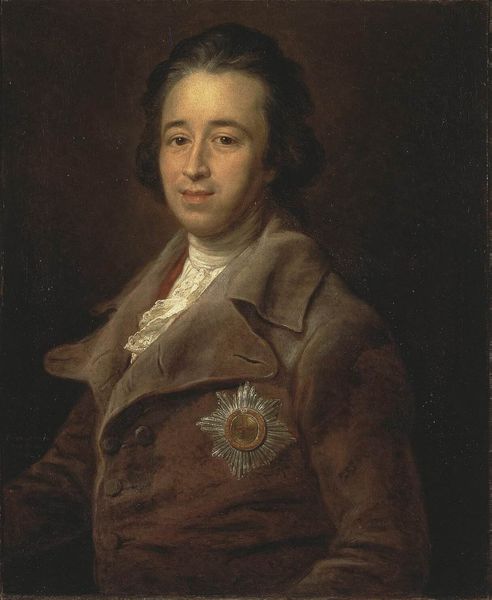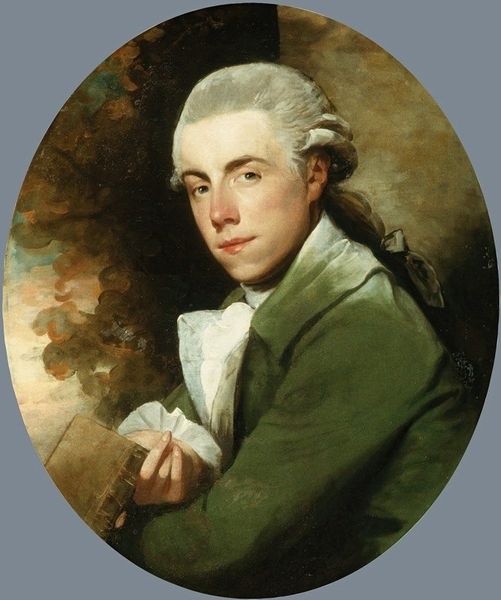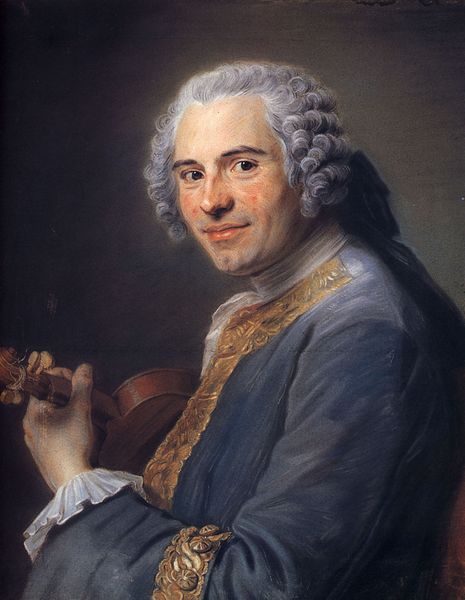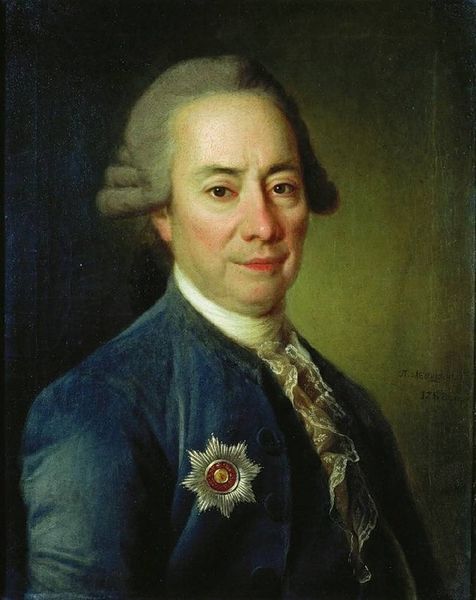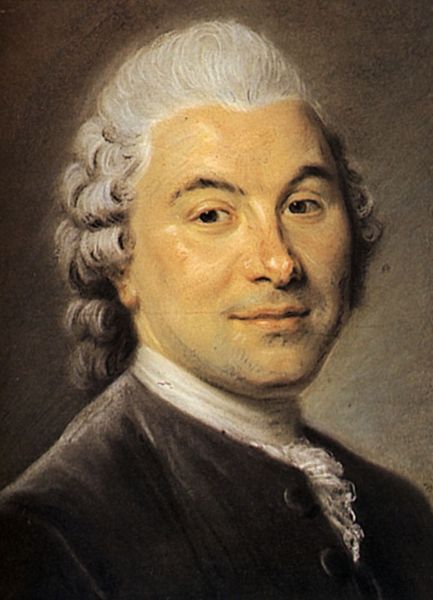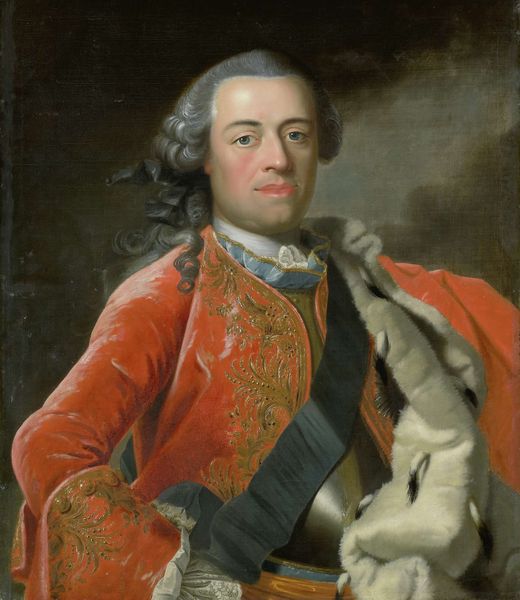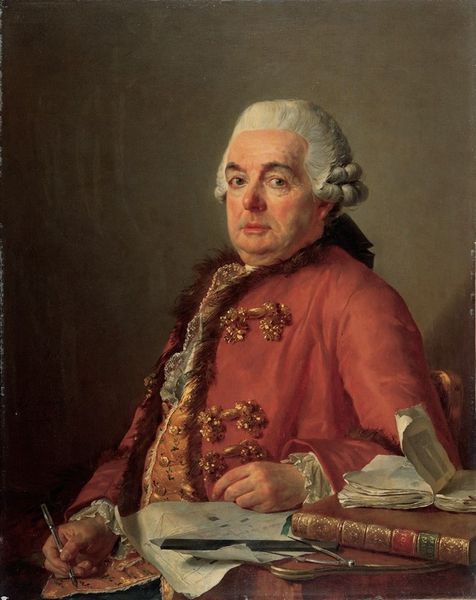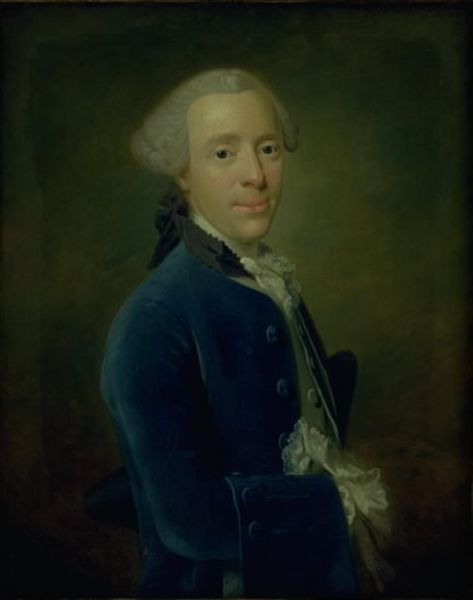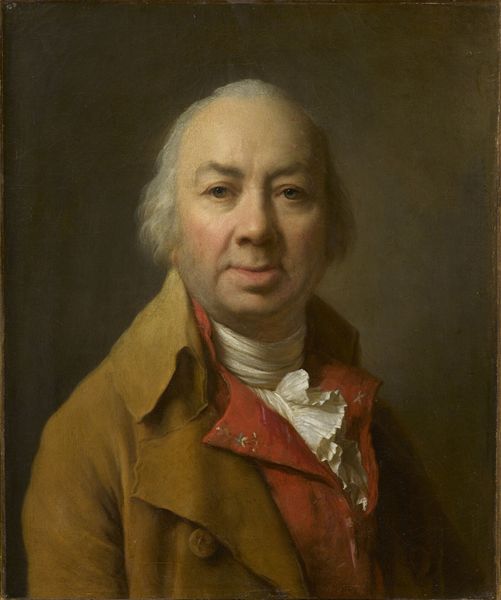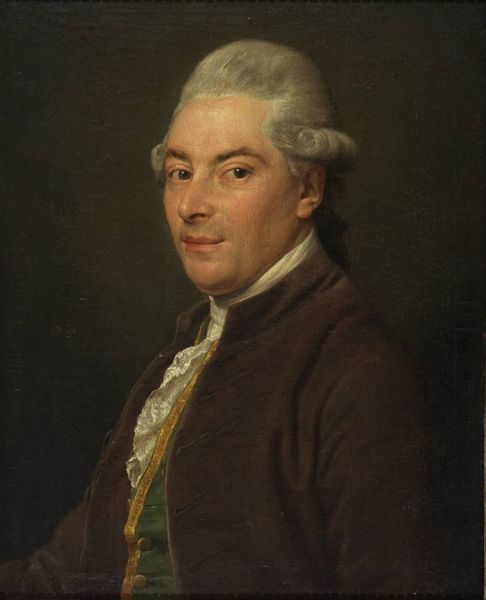
painting, oil-paint
#
portrait
#
baroque
#
painting
#
oil-paint
#
genre-painting
#
history-painting
#
academic-art
Copyright: Public domain
Curator: Welcome. We're looking at "Portrait d'un homme portant un exemplaire des Essais de Montaigne" by Johann Anton de Peters, rendered with oil paint in the Academic style. Editor: My first impression is one of understated elegance. There's a subdued palette and the man’s gentle gaze lends the portrait a thoughtful and almost intimate quality. Curator: Yes, there's a subtle interplay between the subject's personal identity and the symbolic weight of the book he's holding. Montaigne's "Essays" represent skepticism, introspection, and a focus on human experience. Holding the book signals intellect, certainly, but also perhaps a philosophical bent. Editor: Exactly! Consider the binding itself. The warm, earthy tones of the book suggest a worn object, passed down through generations, full of accumulated knowledge. How was it bound? Who touched it before this gentleman? What sort of labor was required for such craftsmanship? The materials tell a story, not just the philosophy contained within the pages. Curator: Absolutely. His delicate, almost frail, hands suggest someone perhaps more accustomed to contemplation than manual labor. The details of his costume, the draped fabric, and the hint of lace all speak to the status and refined sensibility of the subject. Editor: And what can the very pigments of the paint tell us? Was de Peters experimenting with novel techniques or grinding down conventional materials? These sorts of questions matter in evaluating the art’s value and situating it within the period’s shifting hierarchies of production. Curator: Indeed. This piece reflects the Baroque period’s continued fascination with portraiture. In that respect, the painting is more than a visual likeness; it aims to capture something of the subject’s character, inner life, and even intellectual leanings. The book, here, is not merely an accessory, but an attribute. Editor: For me, considering art like this in terms of social history and labor connects the aesthetic qualities of this piece to lived experiences of its time and helps us understand its continuing significance today. Curator: Reflecting on the symbolism and possible emotional undercurrents deepens my appreciation for the artwork's cultural and intellectual milieu. It provokes inquiry into what qualities the individual wants to project and what significance a specific cultural item possesses.
Comments
No comments
Be the first to comment and join the conversation on the ultimate creative platform.
